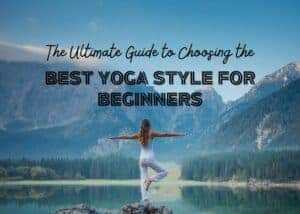In the fast-paced world we live in, where stress and anxiety seem to be constants, the demand for holistic wellness practices has surged.
Yoga, an ancient practice that harmonizes the mind, body, and soul, has gained immense popularity. As more individuals seek a balanced and healthy lifestyle, the role of a yoga teacher becomes increasingly significant.
This article will guide you through the steps on how to become a yoga teacher, from embracing the practice to obtaining the necessary certifications.
Table of Contents
How to Become a Yoga Teacher?
1. Understanding the Essence of Yoga
Exploring the Roots of Yoga
Before delving into the journey of becoming a yoga teacher, it’s crucial to comprehend the essence of yoga itself. Originating from ancient India, yoga is not just a physical exercise but a holistic practice that integrates breath control, meditation, and ethical principles. Understanding the philosophy behind yoga lays a solid foundation for aspiring teachers.
2. Deepening Your Practice
Immerse Yourself in the Yogic Lifestyle
To teach yoga authentically, you must first be a dedicated practitioner. Attend various yoga classes, explore different styles, and immerse yourself in the yogic lifestyle.
Develop a regular practice routine that includes asanas, pranayama, and meditation. This firsthand experience will not only enhance your skills but also deepen your understanding of the transformative power of yoga.
3. Choose a Yoga Teacher Training (YTT) Program
Selecting the Right Path
The next step on your journey is enrolling in a Yoga Teacher Training program. Look for programs accredited by reputable organizations like Yoga Alliance. These programs typically span 200 to 500 hours and cover anatomy, philosophy, teaching methodologies, and practicum.
Research different schools, compare curricula, see reviews and choose one that aligns with your goals and values.
Factors to Consider in YTT Selection
When selecting a YTT program, consider factors such as the school’s reputation, faculty credentials, and the location of the training. Ensure that the program is recognized by Yoga Alliance, as this accreditation adds credibility to your certification.
4. Dive into Yoga Philosophy
The Heart of Yoga Teaching
A true yoga teacher doesn’t just guide physical postures; they impart the wisdom of yoga philosophy. Dedicate time to study ancient yogic texts like the Yoga Sutras of Patanjali and the Bhagavad Gita.
Understanding the philosophical underpinnings of yoga will enrich your teaching and allow you to share the profound aspects of the practice with your students.
5. Refine Your Teaching Skills
The Art of Effective Instruction
Effective communication and teaching skills are fundamental for a yoga teacher. During your YTT, you’ll learn about class sequencing, adjusting students, and creating a conducive environment. Practice teaching regularly, seek feedback, and refine your skills. Consider taking additional workshops on communication and teaching methodologies to enhance your abilities.
Assisting and Adjusting
Learn the art of hands-on adjustments to ensure your students’ safety and optimize their alignment. Understanding the nuances of assisting will set you apart as a skilled and attentive yoga teacher.
6. Develop Your Unique Teaching Style
Embrace Your Authenticity
While it’s essential to learn from experienced teachers, don’t forget to embrace your unique teaching style. Infuse your personality, experiences, and passion into your classes. Authenticity resonates with students, creating a more profound connection and making your classes memorable.
7. Obtain Yoga Alliance Certification
Yoga Certification
Yoga Alliance is a globally recognized organization that sets standards for yoga teacher training. Completing a Yoga Alliance-certified program adds credibility to your qualifications. Ensure that your chosen YTT program meets the Alliance’s criteria and follow their guidelines for registration upon completion.
Registered Yoga Teacher (RYT) Designations
Upon successful completion of a Yoga Alliance-certified program, you’ll earn the designation of a Registered Yoga Teacher (RYT). There are different levels, such as RYT-200 and RYT-500, depending on the hours completed in your training. This designation not only validates your skills but also opens doors to teaching opportunities worldwide.
8. Cultivate a Digital Presence
Navigating the Online Yoga Community
In today’s digital age, establishing an online presence is crucial for reaching a broader audience. Create a professional website and showcase your expertise, classes, and philosophy. Utilize social media platforms to share snippets of your practice, connect with the yoga community, and attract potential students.
Online Teaching Platforms
Consider exploring online teaching platforms to broaden your reach. Virtual classes, workshops, and tutorials allow you to connect with students globally, making yoga accessible to a diverse audience.
9. Continuing Education
Lifelong Learning in Yoga
Yoga is a dynamic and evolving practice. Stay updated with the latest trends, research, and teaching methodologies by engaging in continuous education. Attend workshops, conferences, and advanced training programs to enhance your skills and keep your teaching fresh and innovative.
10. Gain Teaching Experience
From Student to Teacher
Put your training into practice by gaining teaching experience. Offer classes at local studios, gyms, or community centers. Consider volunteering at events or leading donation-based classes to build your confidence and develop your teaching style.
Mentorship Opportunities
Seek mentorship from experienced yoga teachers. Learning from their insights and experiences can provide valuable guidance as you navigate the challenges and joys of being a yoga teacher.
Conclusion
Embarking on the journey to become a yoga teacher is a transformative and fulfilling endeavor. From deepening your personal practice to obtaining certifications and gaining teaching experience, each step contributes to your growth as a dedicated yoga instructor.
Remember, the essence of yoga lies not just in the physical postures but in the journey of self-discovery and the ability to share that wisdom with others. May your path to becoming a yoga teacher be filled with joy, mindfulness, and the profound impact of spreading the light of yoga.
Also Read:







